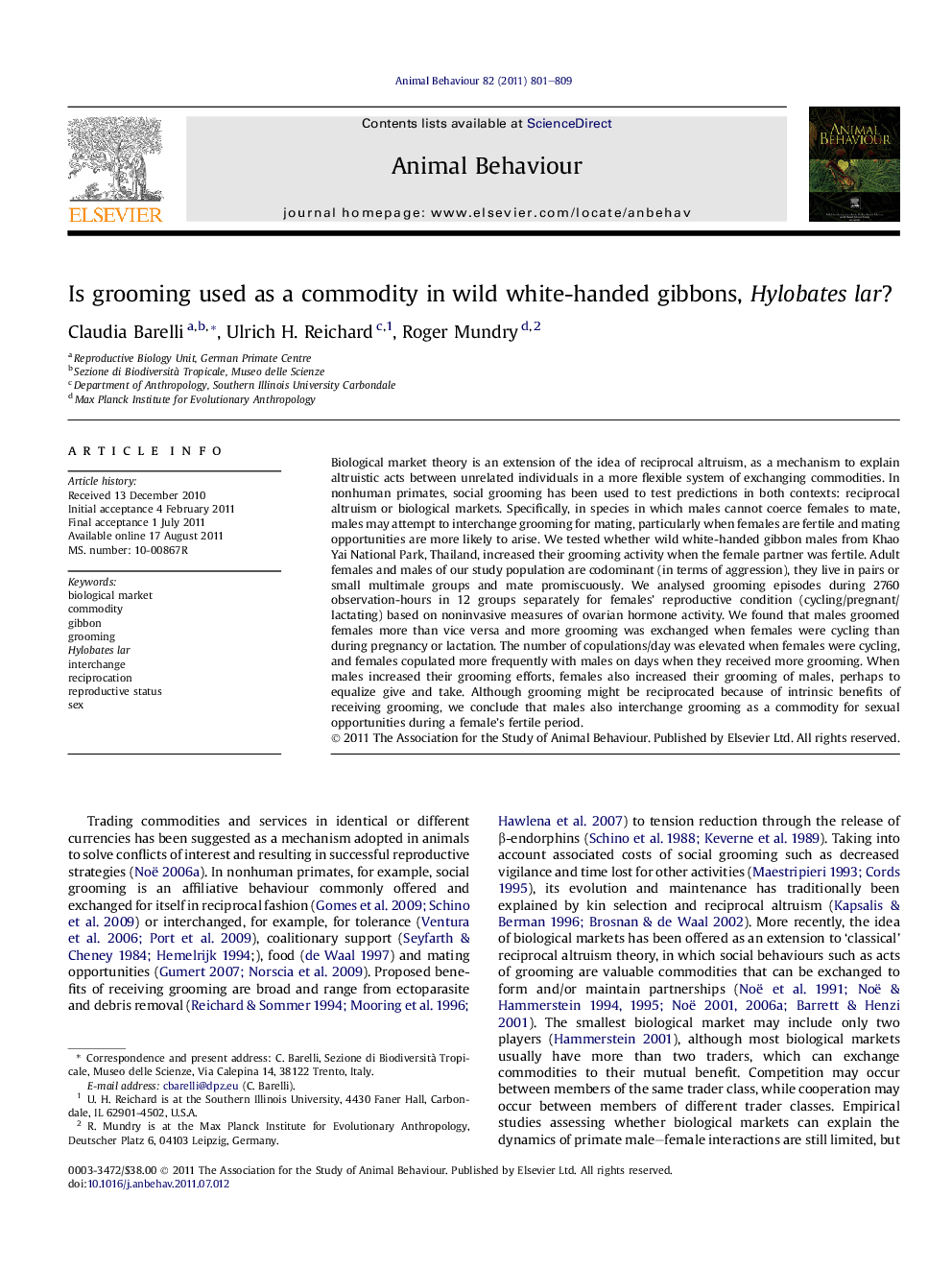| کد مقاله | کد نشریه | سال انتشار | مقاله انگلیسی | نسخه تمام متن |
|---|---|---|---|---|
| 2416648 | 1104286 | 2011 | 9 صفحه PDF | دانلود رایگان |

Biological market theory is an extension of the idea of reciprocal altruism, as a mechanism to explain altruistic acts between unrelated individuals in a more flexible system of exchanging commodities. In nonhuman primates, social grooming has been used to test predictions in both contexts: reciprocal altruism or biological markets. Specifically, in species in which males cannot coerce females to mate, males may attempt to interchange grooming for mating, particularly when females are fertile and mating opportunities are more likely to arise. We tested whether wild white-handed gibbon males from Khao Yai National Park, Thailand, increased their grooming activity when the female partner was fertile. Adult females and males of our study population are codominant (in terms of aggression), they live in pairs or small multimale groups and mate promiscuously. We analysed grooming episodes during 2760 observation-hours in 12 groups separately for females’ reproductive condition (cycling/pregnant/lactating) based on noninvasive measures of ovarian hormone activity. We found that males groomed females more than vice versa and more grooming was exchanged when females were cycling than during pregnancy or lactation. The number of copulations/day was elevated when females were cycling, and females copulated more frequently with males on days when they received more grooming. When males increased their grooming efforts, females also increased their grooming of males, perhaps to equalize give and take. Although grooming might be reciprocated because of intrinsic benefits of receiving grooming, we conclude that males also interchange grooming as a commodity for sexual opportunities during a female’s fertile period.
► Grooming in wild gibbons qualifies as a commodity, it is interchanged for itself and other goods.
► Males interchange grooming as a commodity for sexual opportunities during females’ fertile period.
► Females copulated more frequently with males on days when they received more grooming.
► When males increased their grooming efforts females likewise increased grooming males.
Journal: Animal Behaviour - Volume 82, Issue 4, October 2011, Pages 801–809